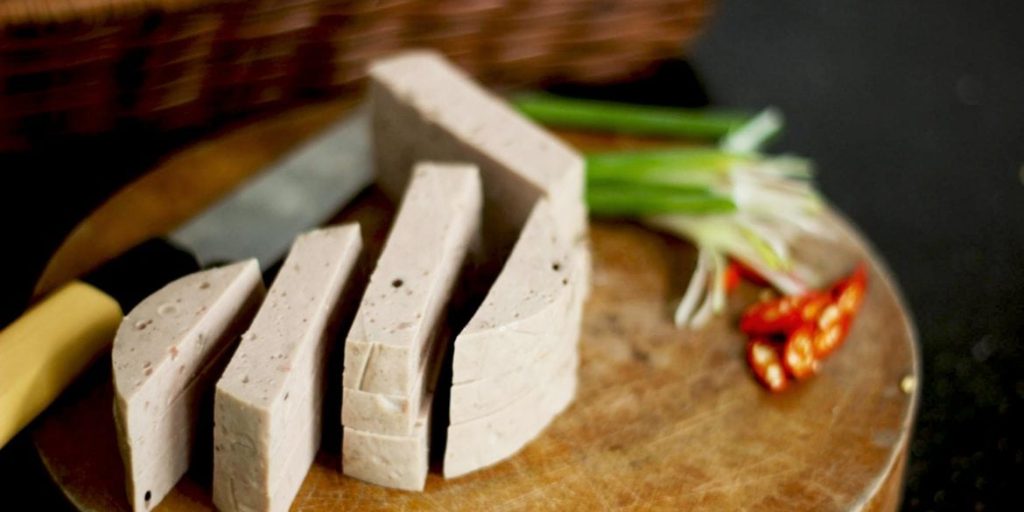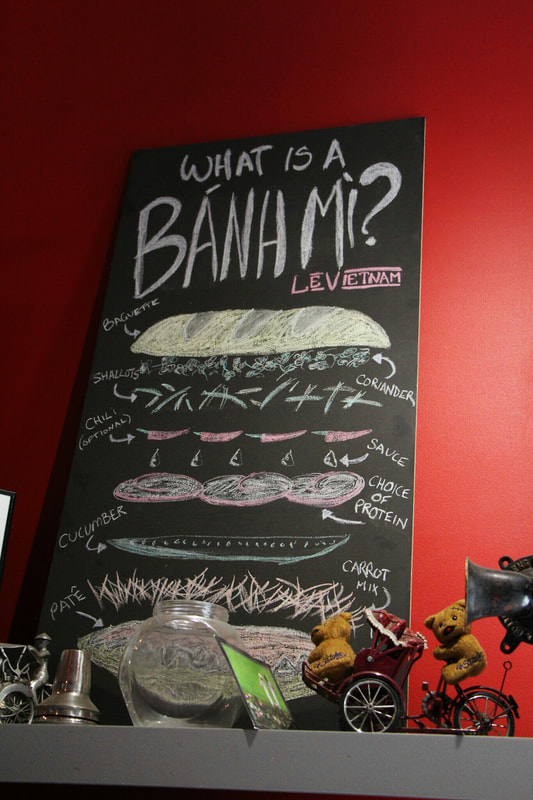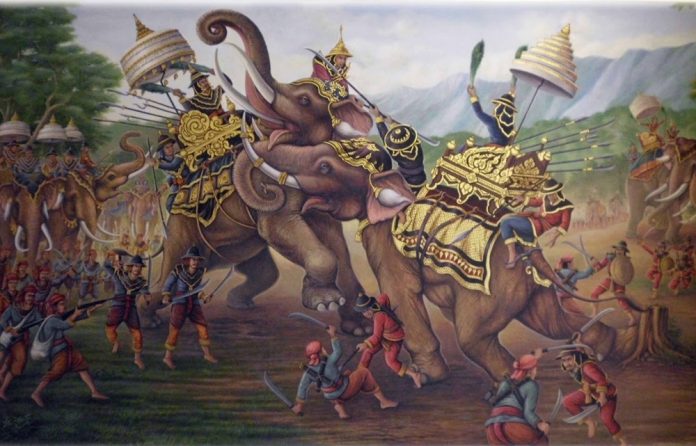Vietnamese bánh mì offers a wealth of textures. Crispy bread! Fatty mayo and meats! Crunchy pickles! Hot chilies! Refreshing cucumber and herbs! …Vietnamese cuisine blends East Asia with Southeast Asia, South Asia and the West. Bánh mì is the perfect hybrid. – Andrea Nguyen, Food Writer and Cook Book Author
In Vietnam, ‘Bánh mì‘ when translated literally refers only to ‘bread’, or ‘wheat cake’. The pork, paté, and pickles combination now familiar to the West is known as a bánh mì thịt ngoui, ‘bread, meat and cold cuts’, often referred to as the bánh mì đặc biệt, ‘the special’.
The French arrived in Vietnam initially as missionaries in the seventeenth century but initiated a 30-year conquest of Vietnam, Cambodia, and Laos in 1859, eventually forming the federation of Indochina in 1887. The French justified their colonisation efforts as a a ‘civilising mission’ (‘ mission civilisatrice’) an idea to introduce modern political ideas, social reforms, industrial methods and new technologies to undeveloped nations. In reality, French colonialism was chiefly driven interested in acquiring land, exploiting labour and making profit.
For a time the colonists maintained a European diet while disapproving of any French who ate Vietnamese food, and any Vietnamese who ate French food.
At the outbreak of the First World War in 1914, the French colonial government also forced Germans to leave Indochina. The two largest import companies in Indochina (Speidel & Co. and F. Engler & Co.,), being German-owned, were seized by the French colonial authorities. The expulsion of German managers and continued government harassment (via customs/regulatory interference) led to closure of these companies and left warehouses full of European perishables. In an effort to liquidate stocks and relieve the overflowing supply, the government turned to the local Vietnamese market to source new customers. Advertisements were specially tailored for the Vietnamese market and the working classes were now able to afford pate, cold meats, bread and Seasoning Sauce (a Swiss -made savoury flavor enhancer) all of which became important components of the modern bánh mì.
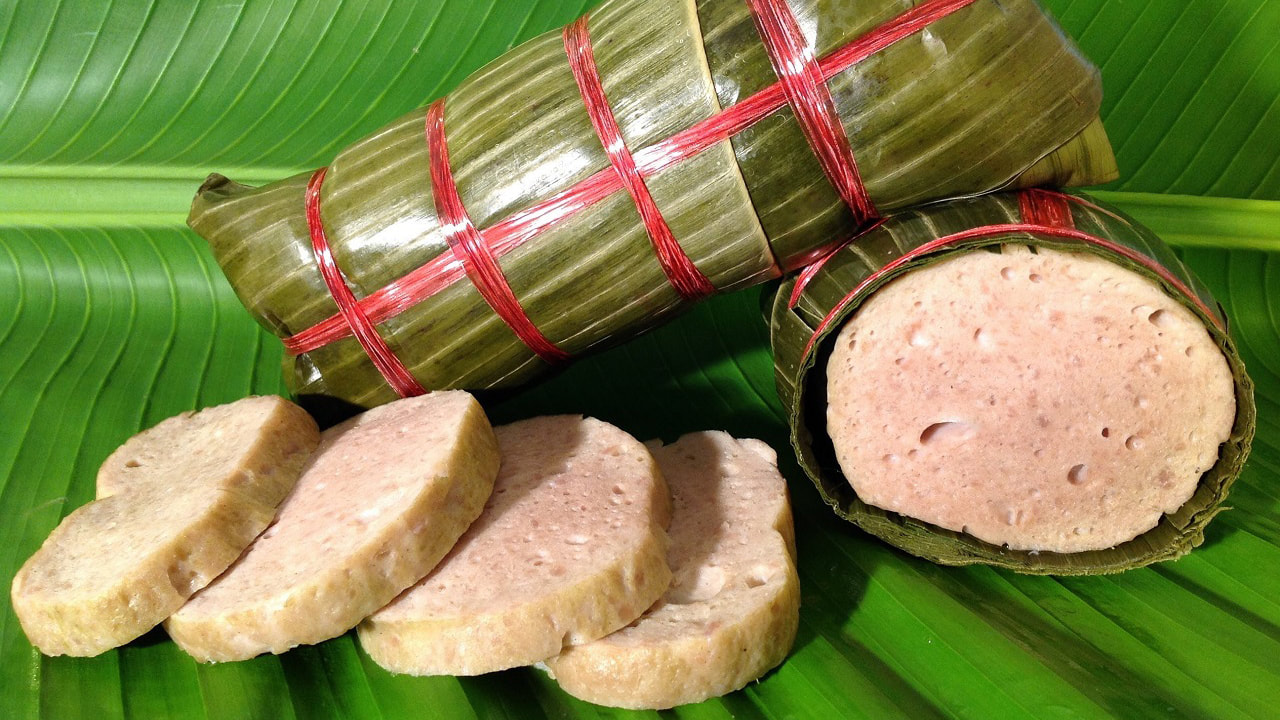 Chả lụa, a cooked pork roll lightly seasoned with fish sauce, and traditionally steamed or boiled in a banana leaf Chả lụa, a cooked pork roll lightly seasoned with fish sauce, and traditionally steamed or boiled in a banana leaf |
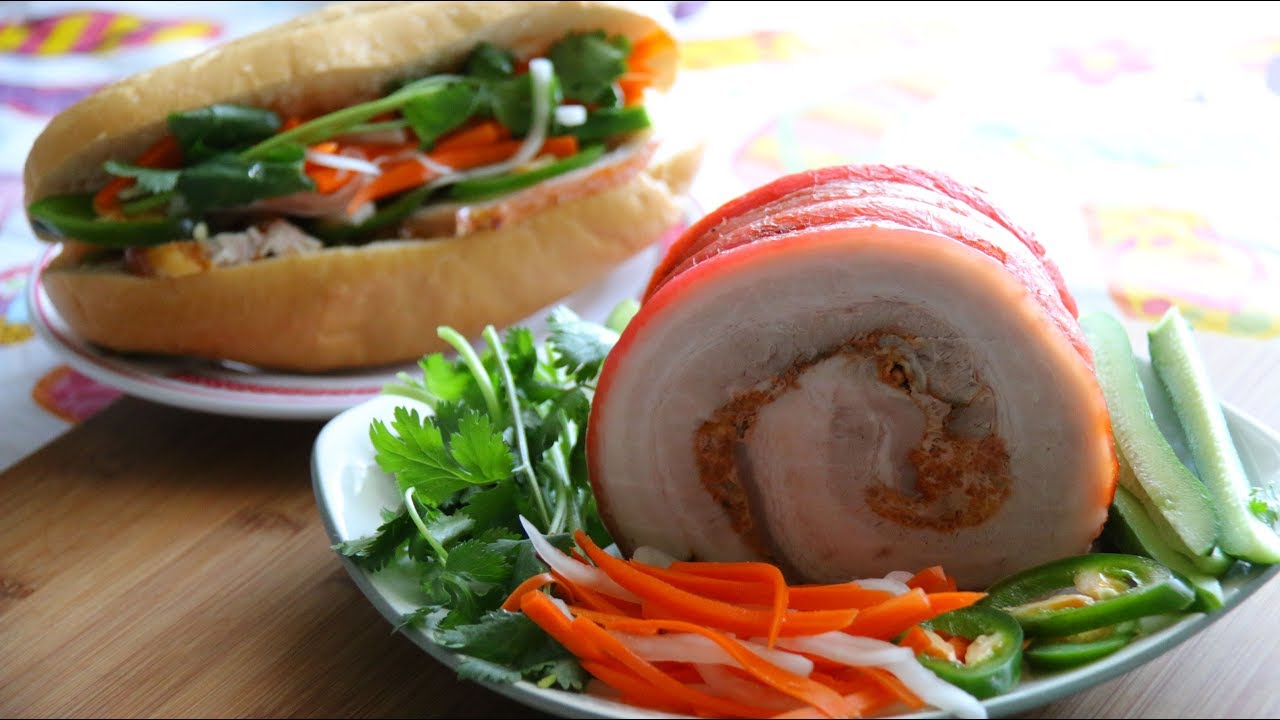 Thịt nguội is a Vietnamese salami containing cured pork layered with fat Thịt nguội is a Vietnamese salami containing cured pork layered with fat |
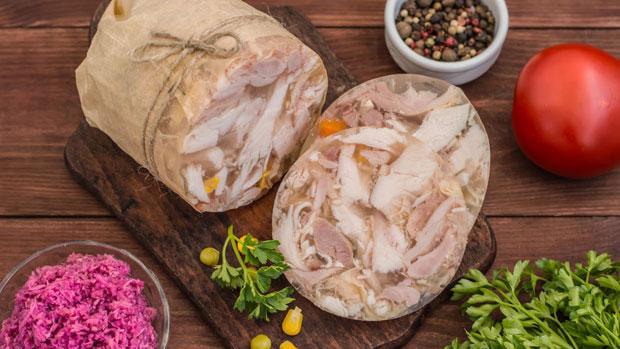 Giò thủ cold cut made from a pig’s head but can also be made with calf or sheep. Congealed together by the natural gelatin of the head organs, Giò thủ is served as a cold cut and also luncheon meat Giò thủ cold cut made from a pig’s head but can also be made with calf or sheep. Congealed together by the natural gelatin of the head organs, Giò thủ is served as a cold cut and also luncheon meat |
there are these additives in the flour and the dough that Vietnamese bakers learned to use over the years because they needed that dough to rise in tropical humidity – Andrea Nguyen
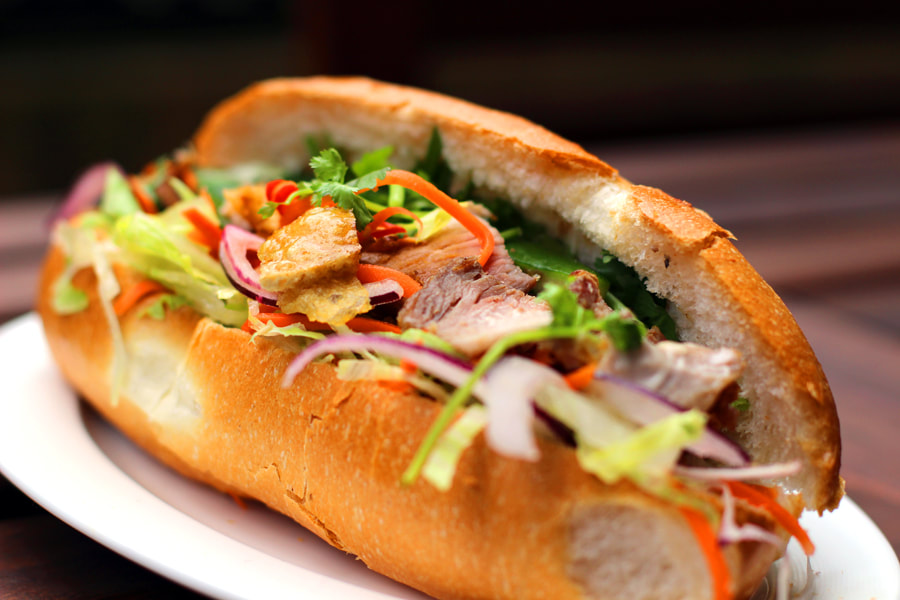
http://roadsandkingdoms.com/2016/the-sandwich-that-ate-the-world/
https://encyclopedia.1914-1918-online.net/article/food_and_nutrition_indochina
http://alphahistory.com/vietnamwar/french-colonialism-in-vietnam/
https://xotours.vn/blog/2017/04/26/breaking-down-the-banh-mi/
http://www.theravenouscouple.com/2010/02/gio-thu-vietnamese-head-cheese.html
http://www.traveller.com.au/vietnamese-street-food-where-to-find-the-best-banh-mi-in-hoi-an-vietnam-gttj4x
https://www.thecairoreview.com/wp-content/uploads/2015/09/CR18-Lam.pdf
https://www.chowhound.com/post/vietnamese-sandwich-history-origins-269669
https://www.itourvn.com/blog/vietnamese-foods-a-guide-to-the-banh-mi
https://www.britannica.com/place/Ho-Chi-Minh-City



